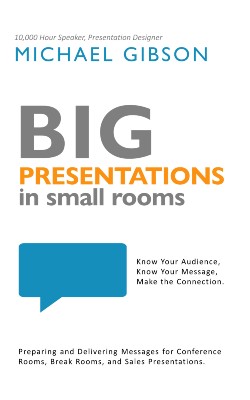Presentation filters make the difference between a disaster and a success.
Yep.
Filters are that important.
When you receive an opportunity, remember these things!
Know your audience. Know your goal. And use filters.
Not all information should get through. Not every idea should pass.
To help us understand the filtering process, let’s discuss the levels of filtering.
WHAT I COULD SAY: UNFILTERED CONTENT
When compiling content, you are in the prefiltered stage.
There is so much you could say, so much you could show! You could share data, tell jokes, show graphs and charts, tell stories, share illustrations, display images, and give an inspiring call to action.

Imagine the potential content as if it were a lake. Your content is the water. There is so much!
But you do not want to drink it.
It is too much. And it contains impurities.
Lake water needs a filter.
And people need filters.
Most families have at least one person who has no filter. These are the ones who keep the gatherings interesting. Or stressful. It depends on the topic.
Often, the other members of the family feel they are forced to drink lake water! It is too much, and it usually contains impurities—things that should have been filtered out!
We do not want our audience to feel this way! We need to filter the content.
The first step of compiling content is important. But it is only the first step. You have a great source; now it is time to make it safe and palatable.
WHAT I SHOULD SAY: PRESENTATION FILTER FOR AUDIENCE
As you begin filtering content, keep in mind the audience, the goal, and the moment.
The Big Presentations mantra is this:
Know your audience.
Know your message.
Make the connection.
Knowing your audience will help you filter your content so you can make the connection. As you consider your audience, you will see that some content is not relevant. You might notice that some content is too elementary while other content is too advanced. Or you may realize that you will have to use wisdom as you present to both novices and experts within the same audience.

Remember that each presentation will be delivered at a specific moment. That moment has context. What else is going on at that moment? Has a tragedy recently occurred? Is there local tension over an event? Is there national tension regarding certain topics?
When you acknowledge the moment, you might discover a need to filter content that would be ineffective or even offensive – at that moment.
Another thing to consider is redundancies. While reviewing the compiled content, you could discover that many items are saying the same thing. Is this what you want? Or should you filter out the repetition?
This first level is like the filtering that allows lake water to be safe to drink. It might not taste good, but it is drinkable. Yet it is not good enough to meet the standards of a Big Presentation. It still might be too much. It is time for another filter.
WHAT I HAVE TIME TO SAY: PRESENTATION FILTER FOR THE CLOCK
After filtering for the audience, then it is time to consider the clock. How long is your presentation? How much time has been allowed?
If you don’t know, find out! Push for clarity. Discover the numbers. Is it five minutes? Seven? Ten?
If they do not share that information, then seek to discover how many items are on the agenda and do the math.
Once you know the time limits, then you can filter accordingly. Your product will be better as a result. And once your audience experiences your well-filtered content, they will want more. This means more opportunities for you.

“Ugh. This is not filtered.”
That was my first thought when I sipped the water at a local coffee shop. Then I smiled, realizing how much I had changed since my childhood. Growing up in Pasadena, TX, and spending a lot of time in South Houston, I did not complain about the taste of water. It was water!
Hmmm.
But I also didn’t enjoy drinking water unless I was extremely thirsty. Another realization!
I now enjoy drinking water when it is filtered. Once I experienced it, I wanted more. And I began to notice when it was not filtered.
I do realize that city water has gone through a filtering process. It did not come straight from the lake to my mouth. But it was not filtered as much as it could have been.
This is true for your presentations.
When you filter for time, you are filtering previously filtered content.
Although it can be frustrating and challenging, the audience’s experience will be much better due to the work you invest in the product.
And remember that time is valuable. When you take too long, audience members feel robbed. When you end early, it is received as a gift.
PRESENTATION FILTERS CREATE CLARITY AND REFRESHMENT
When you apply the filters, your message will be as clear as a glass of filtered water. And your audience will have a refreshing experience because your message will be focused and helpful.

This is a skill that becomes easier with time. Remember. It’s all practice. Keep trying!
Want to know more? Keep reading the blog!
Do you prefer to listen? Check out The Big Presentations Podcast!
Want to know even more? Order the book Big Presentations in Small Rooms!




